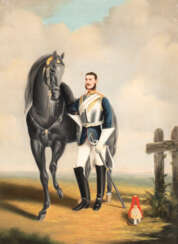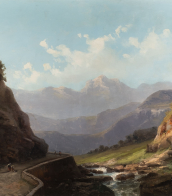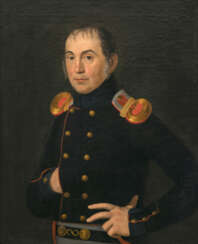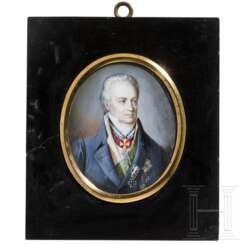gemälde offizier

Albrecht Adam was a Bavarian painter of the first half of the 19th century. He is best known for the fact that as a member of Napoleon's Grand Army he took part in the campaign against Russia in 1812 as the official artist of the headquarters of the IV (Italian) Corps. Throughout the campaign, the artist made sketches and drawings, capturing many of the important events of the campaign. Later, many of these sketches became the basis for full-fledged paintings, and to subjects from the Napoleonic wars, which he witnessed, Adam addressed until the end of his very long life.
Albrecht Adam was also the author of memoirs, in which he described in detail the Battle of Borodino and a number of other key events of the War of 1812.


Johann Georg Ziesenis was a German portrait painter. He came from a family of artisans and artists of the 17th and 18th centuries whose works are attributed to the Hanoverian Rococo.






Carl August Kessler was a 19th century German painter of portraits and landscapes.


Gerhardt Wilhelm von Reutern (Russian: Евграф Романович Рейтерн) was a Russian officer and painter of the first half of the 19th century of Baltic-German origin. He is known as a painter, friend of Goethe and Ludwig Grimm, and father-in-law of Russian poet Vasily Zhukovsky.
Reutern trained in painting in various European cities and specialized in genre paintings. In 1832 he created a series of watercolors depicting ordinary soldiers of the Russian Imperial Guard, which were characterized by realism and warmth. After becoming court painter in 1837, he created famous paintings of biblical subjects, including Abraham Sacrificing Isaac. Reutern traveled to various countries, but finally settled in Frankfurt am Main. He was an academician of the Imperial Academy of Arts in St. Petersburg.














































































